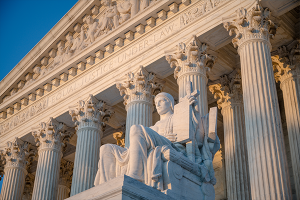
The chief staff performance evaluation process varies from association to association, depending on each association’s organizational goals and distinct character.
These process scenarios can help you get a sense of how an evaluation might proceed.
Scenario A
- The chief staff executive provides the date of the review to the Executive Committee after consultation with the president, usually in December.
- Review forms are provided in advance to the review committee (Executive Committee).
- The Executive Committee meets to go over comments, etc.
- The chief staff executive prepares accomplishments, comments, and future activities.
- The review is conducted on the date specified with chief staff executive present.
- The written evaluation is signed and placed in the chief staff executive’s personnel file.
- The Executive Committee recommends a bonus.
- Salary is not considered at this time.
Scenario B
- The Executive Committee consists of the president, president-elect, secretary, treasurer, and immediate past president.
- Annually, one month prior to his or her anniversary date, the chief staff executive sends the Chief Staff Appraisal Questionnaire to the board president. The board president has the option of sending this form to the entire Board of Directors (and, at his or her discretion, the association past presidents) and asking each of them to write their own appraisal of the chief staff executive.
- When all appraisals have been received, a summary is drawn up for review by the Executive Committee.
- Alternatively, the president may choose to send the appraisal questionnaire only to the Executive Committee. After all appraisal forms are returned, the Executive Committee will call a meeting to discuss and review everyone’s comments.
- Specific goals are identified for the chief staff executive to strive toward during the coming year.
- The answer to this question impacts the chief staff executive’s compensation and any potential bonus: “Did the chief staff executive meet the expressed goals of the Board of Directors from the previous annual review?”
Scenario C
- The president, president-elect, and immediate past president conduct an annual written performance evaluation of the chief staff executive.
- Each year the president, president-elect, and immediate past president, together with the chief staff executive, will establish goals to be achieved within the next 12 months. These goals should be based on the association’s strategic and operational plans.
- Criteria for the evaluation should be based on the agreed-upon goals for the past 12 months as well as job duties, responsibilities, operational achievement, and conduct of the organization and the chief staff executive.
- The annual written performance evaluation, as well as the establishment of the goals and objectives for the chief staff executive, is to be completed no later than Oct. 31 each year.
- The evaluation and any recommendations are submitted to the Executive Committee and the Board of Directors for their review and final approval.
Scenario D
- The chief staff executive contacts the current president to schedule a date for the Evaluation Committee to meet, generally in late October or early November.
- Two weeks prior to the meeting, the chief staff executive prepares a notebook for each member of the Evaluation Committee. The notebook includes a blank copy of the evaluation form, a copy of the employment agreement, an agenda for the meeting, the most recent financial report available, a copy of the prior year’s evaluation, the current strategic plan, the chief staff executive’s job description and accomplishments, and salary surveys.
- Each member of the Evaluation Committee fills out the evaluation sends it to the president by an agreed-upon deadline.
- After receiving all forms from the Evaluation Committee, the president compiles, on another blank form, the consensus of the ratings (averaging scores) and makes copies of that for the meeting. The final four sections of the evaluation form are later completed at the meeting, following discussion.
- The day of the meeting, the chief staff executive meets briefly with the Evaluation Committee to discuss the achievements for the year and answer any questions the group may have. Then the Evaluation Committee meets in executive session to complete the evaluation, determining major areas of strength, areas requiring improvement, suggestions for improvement, and suggested goals for the subsequent year. Committee members sign the evaluation form. They also determine any salary adjustment or bonus at this time.
- The chief staff executive is invited back to the meeting, where the president, often with input from the others, reviews the ratings and discusses the four points on the last page. There is an opportunity for discussion, then the chief staff executive signs the form.
- The original form is placed in the chief staff executive’s personnel file. A copy is provided to the chief staff executive and also to association legal counsel.
- The chief staff executive drafts a report for the president to review, which is presented at the next Executive Committee meeting for approval. The percentage of salary adjustment and/or bonus are approved by the Executive Committee and subsequently reported to the board at its next meeting.
Scenario E
- The Administrative Committee, which meets at least three times a year, annually reviews the benefits package for all staff and conducts the performance evaluation for the chief staff executive.
- The Administrative Committee comprises the past president, who chairs the committee, the association president, the MLS president, and the MLS president-elect.
- The Administrative Committee compiles the evaluation, meets with the chief staff executive during the last quarter of the year to agree upon objectives, and reports to the board of directors.
- The Administrative Committee meets with the chief staff executive to present the evaluation and obtain a signature. The evaluation is placed in the chief staff executive’s permanent file and is only be available to the current MLS and association presidents, legal counsel, and the chief staff executive.
- In the event that the chief staff executive’s performance is deemed unsatisfactory in any respect, the Administrative Committee describes in writing, in reasonable detail, specific instances of unsatisfactory performance.
- The evaluation includes recommendations as to areas of improvement in all instances where performance is unsatisfactory.
- If the chief staff executive disagrees with the evaluation, he or she may respond in writing to the then past president. All such writings are made part of the chief staff executive’s confidential personnel file.
- Upon the conclusion of the evaluation, the Administrative Committee may take action to increase the compensation, bonus, and benefits for the chief staff executive for the subsequent year of the chief staff executive’s contract, subject to the approval of the Board of Directors.
- The committee makes a recommendation to the boards no later than its December meeting regarding:
- The chief staff executive’s salary
- Additional compensation for work completed since the last evaluation
- Salary caps for key staff to provide the chief staff executive with the maximum salary that may be offered since the chief staff executive administers all staff salaries
- Benefit package on vacation, sick days, insurance, and an incentive package for all staff
Checklist for Administrative Committee:
- Revenue benefits package for staff
- Set dates for next year (at least three)
- Meet with the chief staff executive to agree upon objectives for next year
- Compile final evaluation. In the event that the performance of chief staff executive is deemed unsatisfactory in any respect, the Administrative Committee shall describe in writing, in reasonable detail, specific instances of unsatisfactory performance.
- A copy of the written evaluation shall be delivered to the chief staff executive. If the chief staff does not agree, the chief staff executive may respond in writing to the past president.
- Add evaluation to the chief staff executive’s file.
- If compensation is increased or a bonus or benefits are provided, provide information to the Board of Directors.
- Report to the Board of Directors by December 20.
Scenario F
- Around Oct. 1, the chief staff executive e-mails the performance evaluation form to the entire Board of Directors (13 individuals).
- The chief staff executive also sends the president a roster of his/her board of directors so the president can follow up with the board members prior to the October board meeting.
- The day of the October board meeting, just before they adjourn into Executive Session to discuss the chief staff executive’s review, they receive a letter like the one shown below, which addresses salary and bonus issues.
- Following the meeting, the president and president-elect review the chief staff executive and provide the controller with a document on how much to increase the chief staff executive’s salary and/or provide an annual bonus.
- The president compiles all the reviews and provides the chief staff executive with a written review. The chief staff executive forwards a copy to corporate counsel who maintains the chief staff executive’s personnel file.
Sample Letter from Chief Staff Executive to Board of Directors Addressing Salary and Bonus Issues:
Date:
To: President
Cc: Board of Directors
From: Chief Staff Executive
Re: Annual Review
Once again, another year has gone by like a speeding bullet. _____________ marks the date that my annual review, raise and bonus (as appropriate) are due under my contract with the Association.
Section ___ of my contract calls for a minimum of ___% increase effective (date) each year or equal to the CPI, whichever is higher. The CPI this year for August was ____%. This year’s compounded annual rate ending in August was _____% (CPI information from the Federal government website http://stats.bls.gov).
My current salary is $__________. The top end of the salary range for my position established by the independent desk audit done in ______ (adjusted for inflation, including September (year)) is $_____.
Last year’s bonus was $____ and the year before was $_____. The question sometimes arises whether I have to “share” my bonus with staff. No, I include, in the salaries portion of each annual budget, funds to pay both my bonus and staff bonuses as appropriate. Some staff members have received bonuses for work performed above and beyond the call of duty this year, others will receive bonuses before years end. I have tried to get away from an annual year-end bonus because I feel all bonuses should be based on performance.
The (year) budget was a negative ($____). Through the end of August, the association is at a negative ($_____) or _____% better than budget.
Throughout this past year, the association has continued to gain more members than have been warranted by market activity.
I have capped all increases to staff at 2% this year due to the state of the economy. For that reason I am requesting you raise my salary only 2% (and not the _____%) called for under my employment contract. I leave the bonus figure for you to determine. I have paid a few bonuses earlier in the year and I intend to pay bonuses to some staff members that I feel are warranted bonuses near the end of the year.
![]() This section of the HR Toolkit is of use to AEs and association leadership alike.
This section of the HR Toolkit is of use to AEs and association leadership alike.
View HR Toolkit - For Association Presidents to see more.












